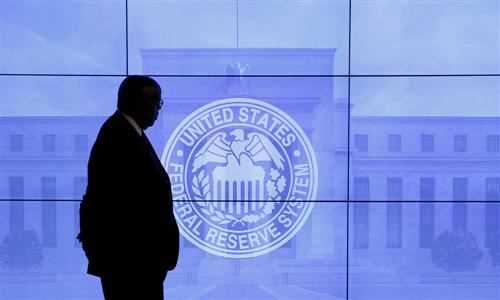Christopher Waller, one of the Fed’s governors, expects the US central bank to start raising its key rates soon after the end of the “tapering”, which will take place at the end of March 2022.
(Boursier.com) – The prospect of higher key rates in the United States is getting closer and clearer. The American central bank (Fed) could thus begin to raise its rates “quickly after” having reduced its purchases of assets to zero (“tapering”), a prerequisite which should be reached in March, said Friday Christopher Waller, one of the US central bank governors.
“Given my outlook for inflation and labor market conditions, I think that an increase (…) will be justified soon after the end of our asset purchases “ (planned for the end of March: editor’s note), Waller said during a virtual speech at the forecasters’ club in New York. “The appropriate time for the first increase (…) will depend on the development of economic activity,” he added.
Three rate hikes expected in 2022
On Wednesday evening, following its monetary policy meeting, the US Federal Reserve adopted a more hawkish (“bullish”) tone, pledging to fight inflation, which has been described as “high” and not more like “transient”.
On the one hand, the Fed announced the early end of its massive asset purchase program in March 2022 instead of mid-2022 planned until then, and on the other hand, it indicated that it was now planning to make no less than three quarter-point rate hikes next year.
This would bring the “fed funds” rate between 0.75% and 1%, (against 0-0.25% since 2020), in a context where inflation has accelerated for reach 6.8% over one year in November in the United States. A level never seen since June 1982.
During his press conference, Fed Chairman Jerome Powell had not given a date for the start of monetary tightening, but had already hinted that it could start soon after asset purchases had ended.
Omicron could exacerbate inflation
This acceleration “gives us flexibility for other adjustments in monetary policy, if necessary, from the spring, to adapt to the changing economic outlook,” said Christopher Waller on Friday.
He notably highlighted the risks posed by the variant Omicron, which “could slow the recovery or exacerbate inflationary pressures, so we have to be ready in the coming weeks to adapt ”.
Waller felt that inflation is now “alarmingly high, persistent and has spread to new categories of goods and services.” “After two years of surprises, the persistently high inflation is the biggest surprise for me,” he admitted. .
© 2021 Boursier.com
